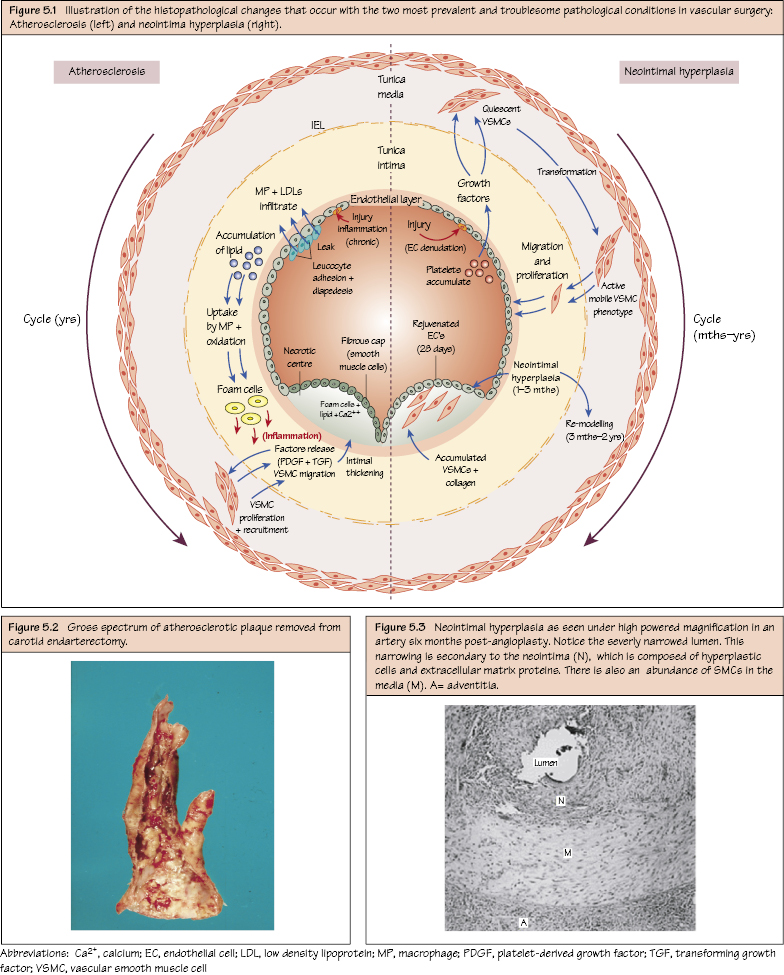Vascular Pathobiology This is the study of the mechanisms behind vascular disease at a cellular level, which is dominated by atherosclerosis. Atherosclerosis is not only the most prolific vascular disease process, but it is the leading cause of death in Western society, contributing to two of the top five mortalities (cardiac and cerebrovascular disease). This principally affects large and medium-sized arteries (the aorta and its branches including coronaries, carotid, mesenteric and lower limb), but has a preponderance for occurring at branching sites (e.g. carotid bifurcation). Known risk factors for its development include male gender, advancing age, smoking, dyslipidaemia, diabetes mellitus and hypertension. Atherosclerotic lesions may occur in isolation, but, as a rule, atherosclerosis is a systemic disease affecting numerous arterial locations. Furthermore, an atherosclerotic lesion in one location (e.g. lower limbs) serves as a surrogate marker for disease elsewhere (e.g. coronary arteries). The lesion forms primarily within the tunica intima consisting of a nodular accumulation of soft, yellowish material within a harder plaque. It is composed of modified macrophages (foam cells), cholesterol crystals and particulate calcification. Probably multifactorial, of which vessel injury and ‘vascular leak’ are the most accepted and popular theories.

Atherosclerosis
Histology
Pathophysiology
Injury and Vascular Leak Theory
Stay updated, free articles. Join our Telegram channel

Full access? Get Clinical Tree


